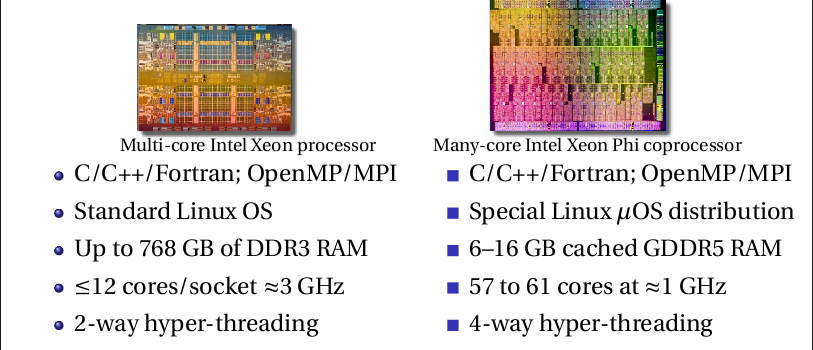Primer on Computing with Intel Xeon Phi Coprocessors

Geant4 is a high energy physics application package for simulation of elementary particle transport through matter. It is used in fundamental physics experiments, as well as in industrial and medical applications. For example, the ATLAS detector at LHC and the Fermi Gamma-Ray Space Telescope rely on Geant4 simulations, DNA damage due to ionizing radiation is studied by a derivative project Geant4-DNA, and radiotherapy planning can benefit from calculations with Geant4.
Geant4 has long been employing distributed-memory parallelism in the MPI framework. However, due to the trend of increasing ratio of core count to memory size in modern computing systems, and due to the need to process larger geometry models, Geant4 is undergoing modernization through inclusion of thread parallelism in shared memory. This effort is led by SLAC researchers Dr. Makoto Asai and Dr. Andrea Dotti (see, e.g., slides 1 and slides 2).
A beneficial by-product of such modernization is the possibility to use the Intel Many Integrated Core (MIC) architecture of Intel Xeon Phi coprocessors for Geant4 calculations. This possibility is being actively investigated by Dr. Dotti, who has extensively discussed his work on this project with us at Colfax.
I was fortunate to be invited to give a presentation for Geant4 users at the SLAC Geant4 Tutorial 2014 held at Stanford University. The talk discusses the Intel Many Integrated Core Architecture and points to the resources for learning about optimization of computing applications for Intel Xeon Phi coprocessors. The slides of the talk can be downloaded from this page.
Presentation slides: ![]() Colfax-G4-XeonPhi-Presentation.pdf ()
Colfax-G4-XeonPhi-Presentation.pdf ()